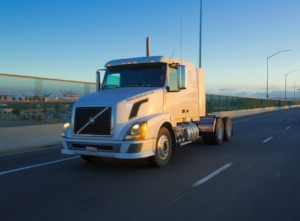San Pedro Bay begins push for zero-emissions
 Harbor Commissioners for the ports of Long Beach and Los Angeles have approved measures to ensure new trucks just entering drayage service meet the cleanest engine standards, a step designed to accelerate the reduction of harmful air emissions from trucks.
Harbor Commissioners for the ports of Long Beach and Los Angeles have approved measures to ensure new trucks just entering drayage service meet the cleanest engine standards, a step designed to accelerate the reduction of harmful air emissions from trucks.
The move will require new trucks that visit marine terminals to be 2014 model year or newer. The requirement takes effect Oct. 1, 2018, and applies only to trucks that are not currently registered in the Ports Drayage Truck Registry (PDTR).
The Los Angeles Board of Harbor Commissioners approved the tariff amendment on June 21. The Long Beach Board of Harbor Commissioners took a similar action on June 25. Final approval is expected in July. The requirement does not apply to trucks already registered in the PDTR and current on their annual registration dues; those trucks will be able to continue operating. All trucks in port service are currently required to be 2007 model year or newer. About half of the trucks registered in the PDTR are at least 2010 model year.
The two neighboring ports coordinate on truck standards and other air quality measures as part of the San Pedro Bay Ports Clean Air Action Plan (CAAP). The tariff change is the first in a series of near-term and long-term steps the ports are taking to advance clean truck progress under the 2017 CAAP Update, approved last November. New strategies seek to phase out older trucks, with a goal of transitioning to zero-emissions trucks by 2035.
Future steps include waiving the annual PDTR registration fee for near-zero and zero emissions trucks and charging a rate for cargo moves by truck with exemptions for trucks that meet near-zero and zero emissions standards. The latter is envisioned to begin in mid-2020. The ports will conduct a truck rate study and feasibility assessments prior to proposing rate changes. About 17,000 trucks are registered to work in the San Pedro Bay port complex.
Reducing pollution from heavy-duty trucks has played a major role in dramatic clean air progress at the San Pedro Bay Ports. Since 2005, the ports have reduced overall emissions of diesel particulate matter 87 percent, sulfur dioxide 97 percent and nitrogen oxides 56 percent, according to the most recent air emissions inventories.
